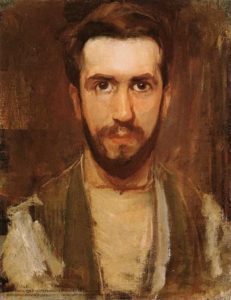
Self Portrait-Piet Mondrian
I read once that Piet Mondrian would look at a landscape, really look at the landscape, by squinting his eyes to shrink down the scene. He’d take out all the unnecessary stuff leaving just bare bones, just the shapes, and that is what inspired and helped him create his masterpieces. I just love that. I love abstract art but I have always found it hard to describe, and I think that description of Mondian’s method says it perfectly. The idea that you can whittle down an idea, a scene, a painting to just the bare bones and create something so simple and yet so powerful. That’s exactly what Mondrian did.
Piet Mondrian was born in Amersfoort in the Netherlands in 1872. While we know Mondrian mostly for those later abstract paintings, it’s really interesting to start with his early work. His early paintings included landscapes of Holland and used more impressionist techniques like his fellow countryman Vincent Van Gogh. They were a far cry from the line and squares of his later work. Though, I still see some of the simplicity that he would take to the extreme in his later work, using minimal colors, lines and shapes. The Mill at Sunset shows the abstract inclination to come. These early works are some of my favorites.
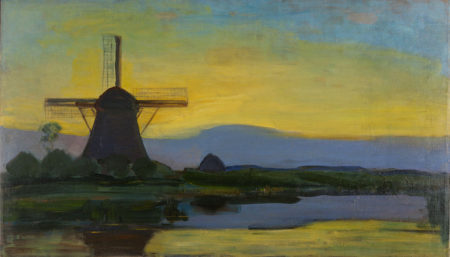
Ootzjide Windmill at Night- Piet Mondrian
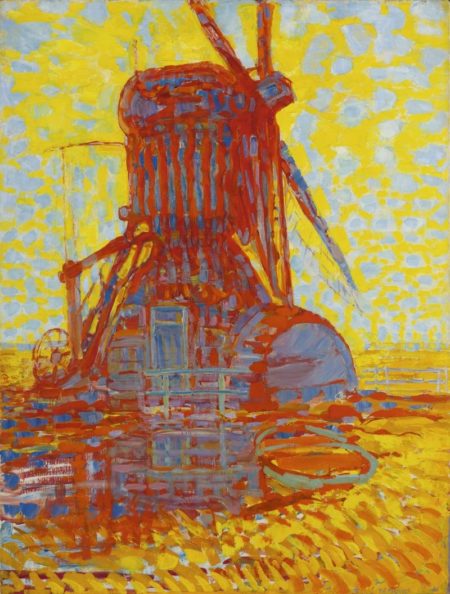
Mill at Sunset- Piet Mondrian
I know, I know… we were talking about his later works with the whole squinting at the landscape thing. We are getting there.
Throw in a little Cubism… In 1911, influenced by the new art movement in Paris, and very impressed with the paintings of Pablo Picasso, you can see the change as you look at his body of work. Once Mondrian was introduced to cubism, you can see the switch begin in the lines of the trees he painted as well as the still lifes.
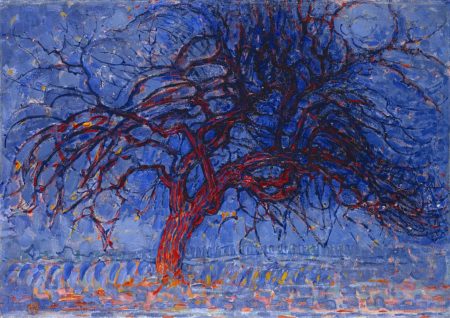
The Red Tree- Piet Mondrian
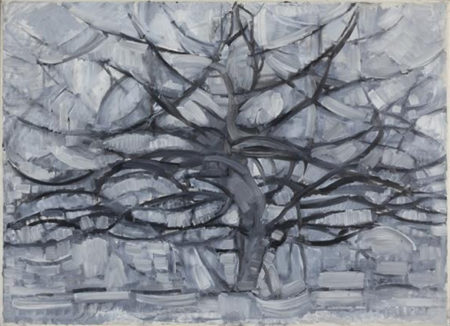
Gray Tree- Piet Mondrian
He took it much further into a style of his own that he called neoplasticism. Painting stripped down to the basics of color, line and form.
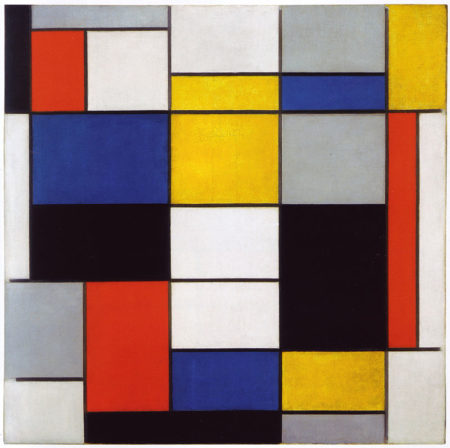
Composition A – Piet Mondrian
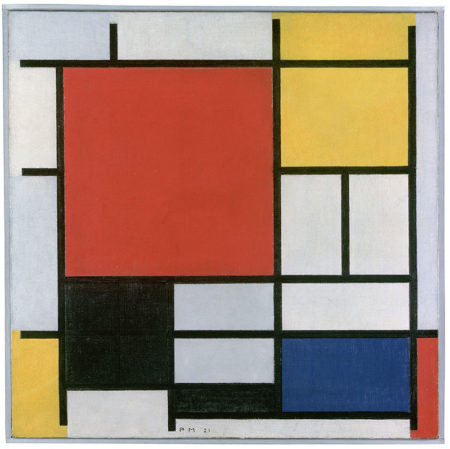
Composition in Red Yellow Blue and Black- Piet Mondrian
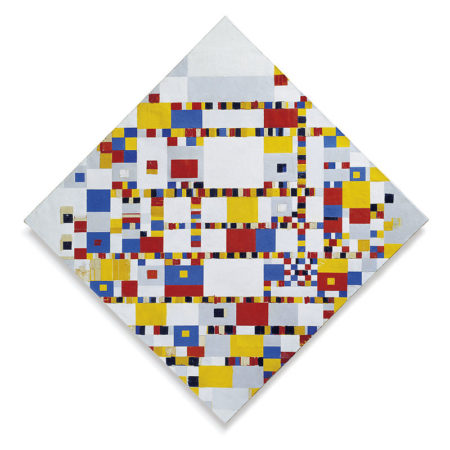
Victory Boogie Woogie-Piet Mondrian
When you look at some of these most famous works, what do you see? Next time you are out, look around. Look at the bare bones, so to speak… squinting at the landscape.
When you look at some of these most famous works, what do you see? Think and see like Mondrian. Next time you draw or paint, try it out for yourself. Check out the latest Let’s Draw for How to Draw Mondrian and you can learn more about Piet Mondrian at Scholastic Go!
